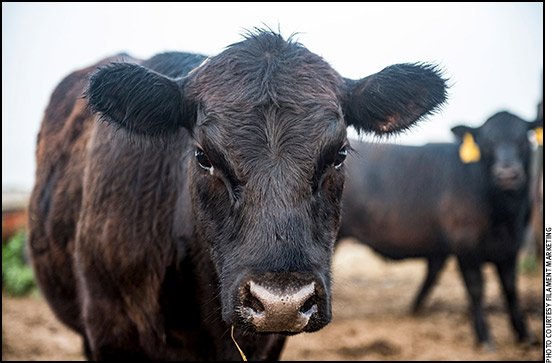MANAGEMENT...

Avoid These 3 Common Weaning Pitfalls
Create a weaning plan with flexibility and from a calf’s point of view.
Have you defined what success and failure look like in your weaning program?
Success might look like live, healthy calves that put on weight with minimal intervention. On the flip side, failure may be calf mortality, sick or stressed calves, a high rate of treatment and less weight to sell. No matter your definitions, having a plan in place can help you avoid weaning pitfalls and, ultimately, failure during this critical time frame.
“Weaning shows how successful a producer has been for the past year,” says Chris Forcherio, beef research manager with Purina Animal Nutrition. “For calves going to market, it’s a producer’s payday. For calves staying in the herd, it’s a time to help them get ready for their next phase of production.” Read more.
Strategies to Reduce Numbers During Drought
When feed is short, there are ways to cull wisely and reduce losses.
There are several strategies that can help you get through a drought or feed shortage with the least negative impact on genetics. Travis Olson, Ole Farms, Athabasca, Alta., Canada, who owns 1,500 mostly Angus cows, says his general rule of thumb is to cull hardest in the classes of cattle that won’t hurt you in the long term.
“In our operation we take a lot of cattle to finish. If we are in a drought, the first group sold is yearling steers. The second thing we look at is the cow herd,” he says. “How you cull cows may depend on when your breeding season is. If you are breeding to calve in February or March and facing a drought this summer, you could ultrasound cows 60 days into the breeding season, identify your open cows and sell them early.” Read more.
Prevent Hoof Cracks
Trimming can sometimes prevent hoof cracks in beef cattle.
Hoof wall cracks are fairly common in cattle and can be divided into two categories — vertical (sandcracks) and horizontal. If the crack goes clear through the horn, it causes pain and lameness.
Jan Shearer, professor and extension veterinarian at Iowa State University, says vertical cracks are more common in beef cattle than in dairy cattle, but horizontal cracks are common in all cattle.
“With vertical wall cracks, there seems to be a genetic predisposition. Some lines of cattle may suffer more cracks than others,” he says. Read more.
Yaupon Presents Problems for Range Pasture Management
Butler Forage Field Day includes yaupon-clearing demonstration.
Yaupon, yaupon and more yaupon. The war for ranchers against this perennial seems to never be over, but there are viable control measures, according to Texas A&M AgriLife Extension Service experts speaking at the recent O.D. Butler Forage Field Day at Camp Cooley Ranch.
“It’s a perennial and comes back even when controlling it at the shallow level,” said Vanessa Corriher-Olson, AgriLife Extension forage specialist from Overton. “Perennials can come back even from live root material. Yaupon is very invasive. You might have an area cleared and think you are done. However, that’s only temporary. It will come back.”
Read more.

Kris Ringwall
Beef Talk
A review and understanding of past data can help determine the future of the beef industry.
In the business of cattle, producers seek to move forward by anticipating future opportunities and realizing what obstacles are present. That is not easy. However, reviewing and understanding past numbers helps.
Read more.
Continued Drought Could Lead to Culling Herds
Culling strategies for ranchers to consider, if needed.
Beef producers should be making plans regarding their herds in case drought conditions continue, said a Texas A&M AgriLife Extension Service expert.
Jason Banta, AgriLife Extension beef cattle specialist, Overton, said a shortage of forage and hay could mean producers will be forced to reduce herd numbers. Having a plan to cull herds can save producers money in the short and long term.
Banta said there was very little hay carryover from last year due to the extended winter. Cooler-than-normal temperatures into spring also meant the first hay cutting, which is typically one of the best, was subpar.
The second cutting was also below normal in quantity and quality due to drought, he said. Drought conditions are also affecting hay availability in other nearby states, including Oklahoma, Kansas, Missouri and Arkansas. Read more.
Angus Advisor
Click here for August herd management tips from cattle experts across the nation. Advice separated by region.
[Click here to go to the top of the page.]






